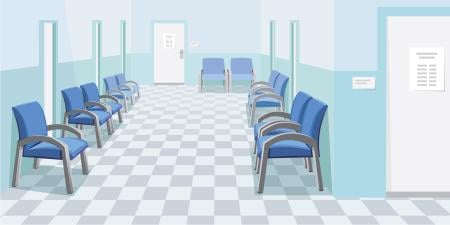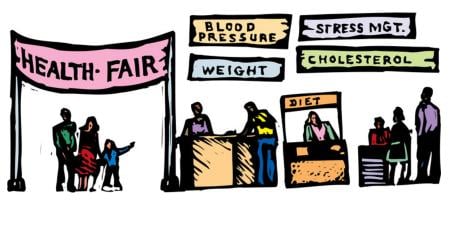In the mid-1960s, the need for greater patient access to general medical services was a principal motivator for establishment of the physician assistant (PA) profession. Since then, PAs have effectively helped to deliver primary care services in many settings. But the supply of clinicians in this field remains a major issue. While the absolute number of primary care physicians, nurse practitioners, and physician assistants is expected to rise in the coming years, the increases are not expected to meet the demands of an aging population, changes in service use, and trends connected with a major expansion of insurance coverage. The best estimates continue to indicate that there will be significant shortages in primary care clinicians. According to the DHHS Agency for Healthcare Research and Quality, only about one-third (208,000) of American physicians practicing in 2009 [1], 43.4 percent (30,300) of PAs practicing in 2010, and 2 percent of nurse practitioners (NPs) practicing in 2010 worked in primary care [2]. It is believed that these numbers are insufficient to meet current and future demands for these services [3].
PAs: Definition and Scope of Practice
Physician assistants are health care professionals licensed to practice medicine with physician supervision. PAs conduct physical exams, diagnose and treat illnesses, order and interpret tests, counsel on preventive health care, assist in surgery, and write prescriptions. A PA’s practice may also include education, research, and administrative services [4].
Utilization in Practice
There appears to be increasing reliance on PAs and NPs to deliver primary care services. Recent data from the National Center for Health Statistics attests to this trend based on information from hospital outpatient departments. According to the data brief, hospital outpatient department visits handled by PAs and advanced practice nurses (including APNs and NPs) increased from 10 percent in 2000 and 2001 to 15 percent in 2008 and 2009 [1], indicating greater use of PAs and other nonphysicians, particularly in settings where a good deal of primary care is delivered.
The same study found that PAs also more often delivered care in clinics associated with nonteaching hospitals and handled a higher percentage of Medicaid, Children’s Health Insurance Program (CHIP), and uninsured patients, as well as younger patients [1]. These data suggest that PAs are used to a greater degree in smaller facilities located in nonurban areas to serve populations that may otherwise be medically underserved, trends that are consistent with the intentions of the profession’s creators [1].
Of particular interest to some is the finding that PAs saw a higher percentage of preventive care visits (17 percent) than visits for routine chronic conditions or pre- and postsurgical care [1]. It has long been speculated that PAs (as well as NPs) have the potential to provide care that is more prevention-oriented than physician care, and it appears that they may be fulfilling this potential. Further delineation of this trend is warranted. Practicing preventive medicine may offer justification not only for the widespread use of PAs and NPs in primary care but also for policy changes leading to greater levels of reimbursement for preventive services by third-party health payors.
Longer-term trends point to a future for PAs and NPs as the principal front-line deliverers of primary care with physicians assuming more managerial and executive functions and a greater focus on inpatient specialty practice. One physician and professor of medicine at Yale School of Medicine recently observed that “in the decades ahead, it is likely that the main role of the generalist physician will be to supervise those providing primary care and to personally care for patients with complex illnesses who are hospitalized, an idea already well established as the hospitalist movement” [6].
In 2012, 34 percent of practicing PAs reported that their specialty was one of the primary care fields: family/general medicine (25 percent), general internal medicine (7 percent), or general pediatrics (2 percent) [5]. The percentages of PAs working in these primary care fields has been steadily declining, down from fully 50 percent in 1997 and 43.1 percent in 2002 [3]. Although the proportion of PAs choosing primary care has declined, the absolute number of PAs in primary care has continued to increase due to the rapid growth in the number of PAs overall. For example, while the number of PAs in primary care grew only about 45 percent between 1997 and 2006 (from about 16,000 to 23,000), the total number of PAs practicing in America doubled [5].
Increasingly popular specialties for PAs include general surgery/surgical subspecialties (25 percent), emergency medicine (12 percent), the subspecialties of internal medicine (11 percent), and dermatology (4 percent). More than 9 percent work in orthopedics; only 2 percent are in obstetrics/gynecology.
Education, Accreditation, and Certification
Because of the close working relationship they have with physicians, PAs are educated in graduate-level, medical-model programs designed to complement physician training. There are 164 accredited programs in the United States, the majority of which offer master’s degrees. The Accreditation Review Commission on Education for the Physician Assistant (ARC-PA) is the accrediting agency responsible for establishing the standards for U.S. PA education and for evaluating programs to ensure their compliance with the standards.
The curriculum is rigorous, comprising basic science, behavioral science, and clinical courses. The required content areas of the preclinical curriculum are anatomy, physiology, pathophysiology, pharmacology and pharmacotherapeutics, and genetic and molecular mechanisms of health and disease. The average U.S. PA program takes 26.5 continuous months of study to complete.
In essence, PA education more closely resembles a condensed version of medical school than does any other health professions curriculum. Clinical education is required in a variety of settings, including outpatient and inpatient settings as well as emergency and long-term care facilities, typically in academic teaching settings. Inpatient clinical rotations are usually conducted in an experiential team format consisting of PA students, medical students, and residents, led by a staff attending physician. The required areas for clinical education are emergency medicine, family medicine, general internal medicine, general surgical care (including operative experiences), geriatrics, pediatrics, prenatal care, and women’s health.
Economic Aspects
Data from the Medical Group Management Association’s (MGMA) 2009 Physician Compensation and Production Survey supply estimates of the amount of care provided annually by primary care clinicians [7]. (The MGMA statistics reflect productivity at larger group practices, which are not necessarily representative of productivity in smaller group settings [7].) Each year, PAs in family practice have 42 percent of ambulatory encounters with patients (physicians have the other 58) [7]. Using relative value units (RVUs; indicators of service effort used for Medicare reimbursement) that reflect personnel time and level of skill involved with care, PAs have almost as many RVUs as family practitioners (48 percent, to physicians’ 52). Use of average, annual patient encounters as the productivity measure may be leading to underestimation of the contribution of PAs because, though in some practices the PA might provide the majority of the care during a patient visit with the physician participating only at the end (e.g., to prescribe medication), these encounters are typically coded as physician encounters [7].
These numbers suggest that hiring a PA in a large practice could be the equivalent of having 0.73 to 0.96 of a full-time (FTE) family practice physician. For general internal medicine and geriatrics, the percentages are somewhat lower (ranging from 70 to 85 percent [7])—perhaps reflecting the complexity of adult cases. For NPs, average annual ambulatory visits and RVUs are lower, possibly reflecting greater use of NPs for administrative and other non-patient-care activities. Although primary care practices differ in how they use certified nurse practitioners (NP-Cs) within a team, these numbers suggest that an NP-C offsets the work of 70 percent to 90 percent of an FTE primary care physician, on average. Additional research on the implications of greater use of NPs and PAs on demand for physicians would be useful.
Conclusions
PAs are likely to continue to be used increasingly in a wide variety of medical practice settings in American medicine, including primary care. They have been shown to be clinically versatile and cost-effective clinicians, extending the services of physician practices and improving delivery of care to underserved populations, and have thus become an important component of the U.S. health care workforce.
References
-
Hing E, Uddin S. Physician assistant and advanced practice nurse care in hospital outpatient departments: United States, 2008-2009. National Center for Health Statistics Data Brief no. 77; 2011. Centers for Disease Control and Prevention (CDC). http://www.cdc.gov/nchs/data/databriefs/db77.pdf. Accessed April 20, 2012.
-
Agency for Health Care Research and Quality. Primary care workforce facts and stats: overview. http://www.ahrq.gov/research/pcworkforce.htm. Accessed April 20, 2012.
- Bodenheimer T, Pham HH. Primary care: current problems and proposed solutions. Health Aff (Millwood). 2010;29(5):799-805.
-
Hooker RS, Cawley JF, Asprey D. Physician Assistants: Policy and Practice. 3rd ed. Philadelphia, PA: F.A. Davis; 2009.
-
Agency for Health Care Research and Quality. Primary care workforce facts and stats no. 2: the number of nurse practitioners and physician assistants practicing primary care in the United States. http://www.ahrq.gov/research/pcwork2.htm. Accessed April 20, 2012.
-
Gifford R. The future of primary care. Primary Care Progress. October 17, 2011. http://primarycareprogress.org/blogs/16/102. Accessed April 20, 2012.
-
Medical Group Management Association. Physician Compensation and Production Survey: 2009 Report Based on 2008 Data.Englewood, CO: Medical Group Management Association; 2009.



